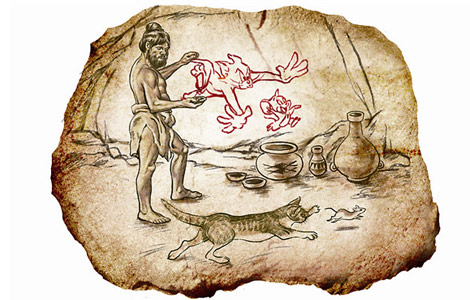Building a healthy population
Updated: 2014-02-18 07:49
(China Daily)
|
|||||||||||
The government guideline for the food industry and nutritional health says that by 2020, China's annual food grain output will be at least 550 million tons and the annual per capita consumption of food grain and meat will be 135 kilogram and 29 kg. But without more detailed planning, it won't be possible to identify structural malnutrition and over-nutrition, says an article in Southern Metropolis Daily. Excerpts:
The government is determined to improve the nutritional intake of people, and that is precisely why it has fixed a per capita meat intake of 29 kg. But the government's guideline lacks details. For example, it should say what should be the per capita meat consumption of different income groups, because if it is "the more the better" for the lower income group, then the opposite is true for high-income people.
Malnutrition is still a serious problem in some rural areas. In 2010, for instance, one in every five children under the age of five years in the poor areas suffered from malnutrition and thus needed better nutrition. Local governments could use the 29 kg per capita meat consumption standard to expand their budgets, if needed, in order to allocate special funds to benefit children in underdeveloped regions.
On the other hand, many urban residents face obesity-related health problems or structural malnutrition for being picky eaters. In fact, obesity is becoming a problem for all age-groups, including children, in China.
Developing the country's food industry and improving people's nutritional intake are part of the government's wider plan. But when drafting detailed rules in this regard, governments at different levels should treat people from different income groups and regions differently.
Related Stories
Exploring health the Chinese way 2014-02-17 11:11
Finding real wealth in health industry 2014-02-17 08:56
City aims for total health coverage in rural areas 2014-02-12 07:08
No proof of human-to-human H7N9 transmission: health authority 2014-02-07 11:33
Today's Top News
Xi calls on leaders to carry out new reforms
Cross-Straits talks possible
Bigger China role in the Arctic
501 arrested in sex trade crackdown
Policeman gets death sentence
EU halts education talks with Switzerland
Ethiopian Airlines hijacker held
Ukraine protesters leave city hall
Hot Topics
Lunar probe , China growth forecasts, Emission rules get tougher, China seen through 'colored lens', International board,
Editor's Picks

|

|

|

|

|

|





